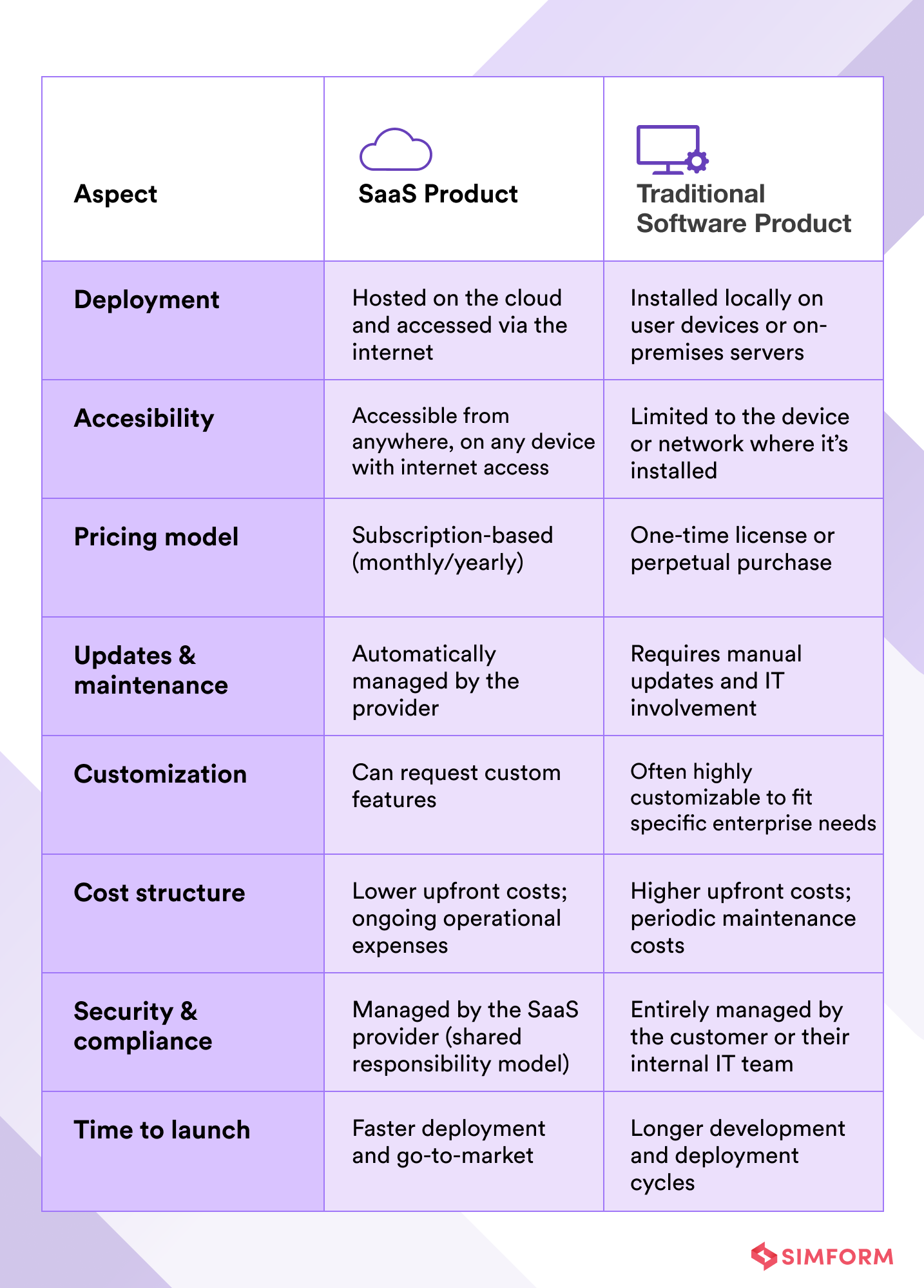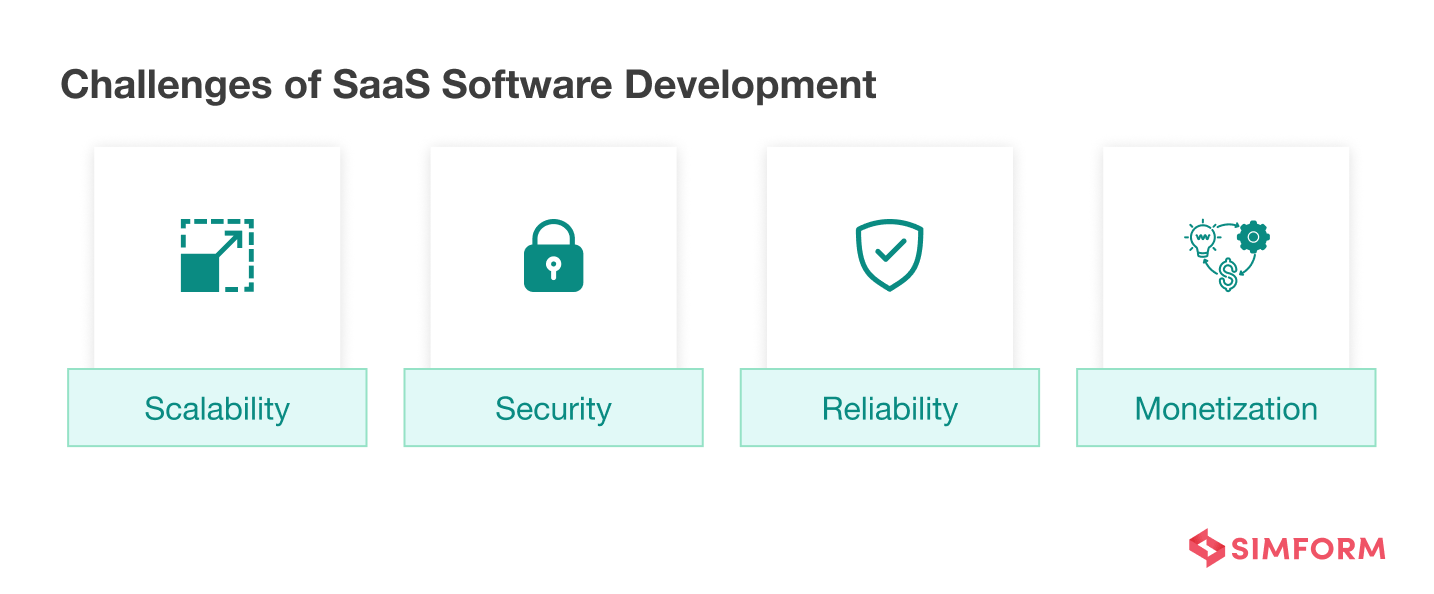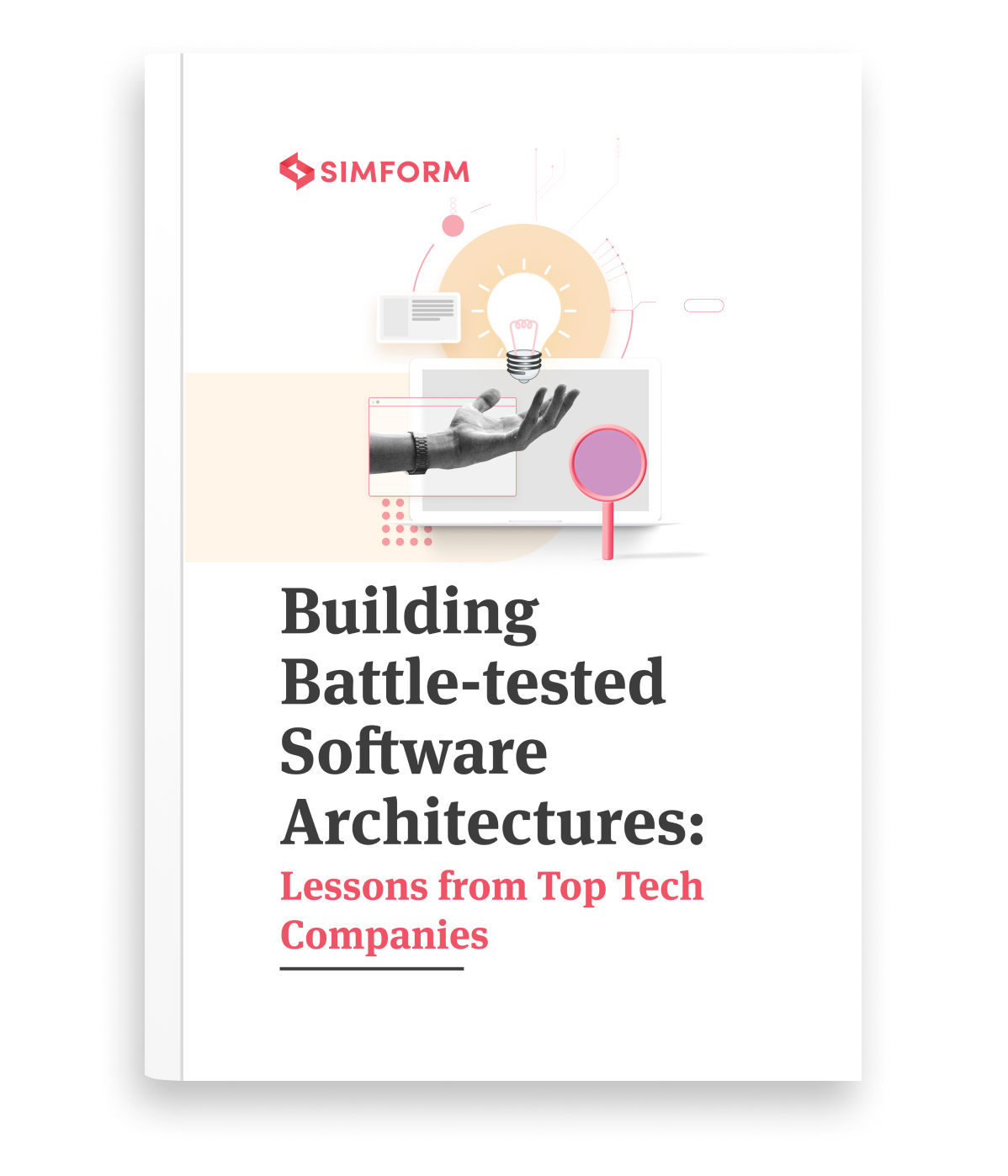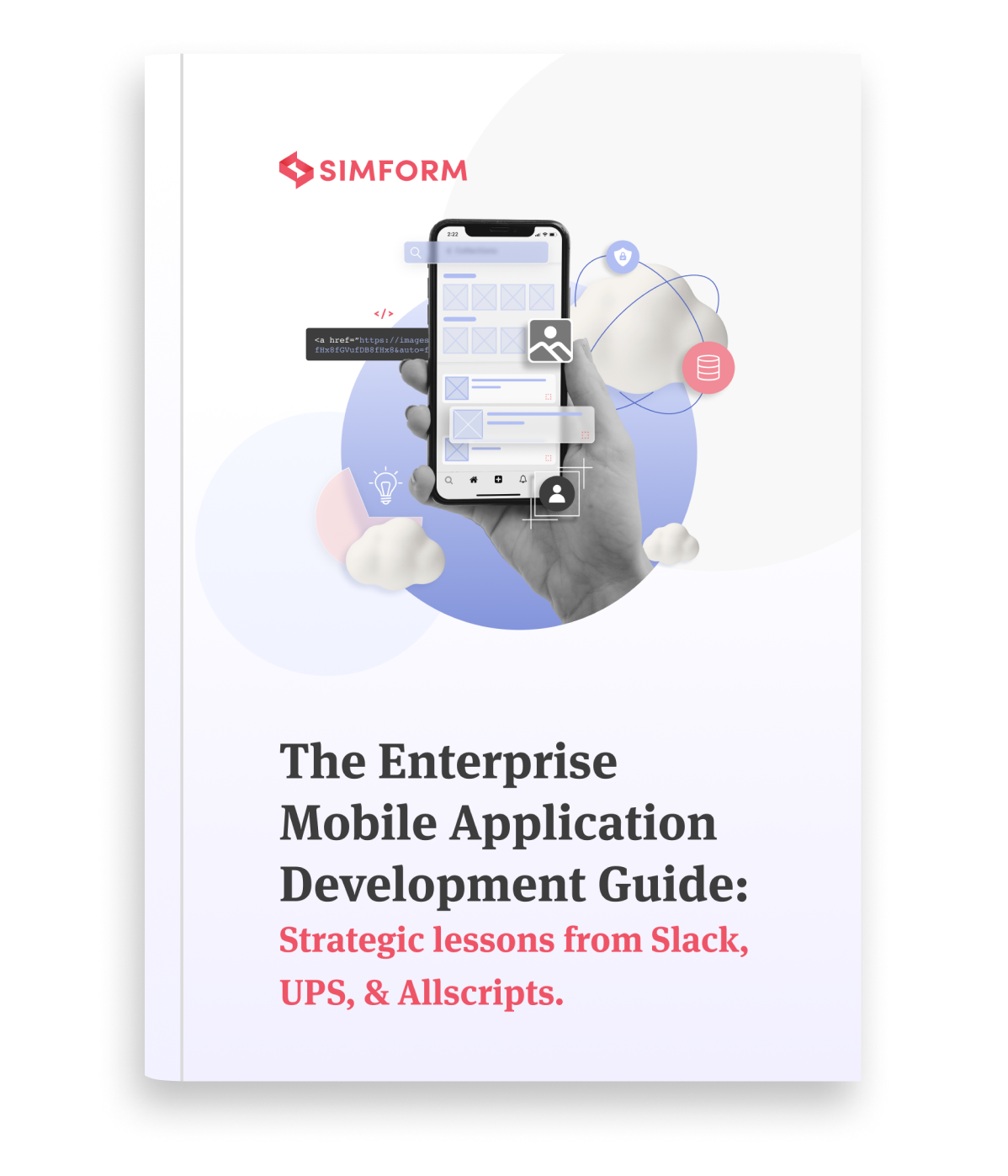What do Netflix, Spotify, Trello, Buffer, Hubspot, and Dropbox have in common? All of them are some of the most successful SaaS products of the decade.
These SaaS-based companies indicate that the future belongs to the SaaS delivery model. And if you’re looking to launch your startup shortly, here’s a statistic you consider: Organizations today manage an average of 275 SaaS applications, and it is estimated that 85% of business applications are SaaS-based. Meanwhile, the global SaaS market is projected to reach $1,228.87 billion by 2032.
However, next-gen founders and co-founders are plagued with questions like – how to build a SaaS application? What things to keep in mind? What steps to follow? This article aims to answer these questions as we take you through the nitty-gritty and nuances of developing SaaS applications.
What is a SaaS development?
Software as a Service (SaaS) is a software licensing and delivery model where you host the application on the cloud. The software is licensed on a subscription model, accessible to users through the internet anywhere and in any time zone without installing it.
Here are some of the key differences between a SaaS product and a standard software product:

SaaS application development is the process of developing and delivering software or a product that aims to solve a specific problem for targeted customers.
But before going into the core details of the SaaS development life cycle, you need to be aware of technical and non-technical considerations. The upcoming section will put a light on these aspects.
Types of SaaS applications
SaaS applications come in various types, catering to different industries and solving specific problems for businesses and individuals. Here are some common types of SaaS applications:
1. Collaboration and project management tools
These SaaS applications focus on enhancing collaboration and productivity among team members. Examples include Trello, Asana, and Monday.com. These tools allow teams to manage tasks, track progress, and communicate effectively, improving workflow efficiency.
2. Communication and messaging platforms
These SaaS applications facilitate real-time communication and messaging within teams and organizations. They offer features like instant messaging, video conferencing, file sharing, and collaborative document editing. Examples include Slack, Microsoft Teams, and Google Meet.
3. Customer Relationship Management (CRM)
CRM SaaS applications help businesses manage and streamline their customer interactions and relationships. They provide features for tracking leads, managing contacts, automating sales processes, and analyzing customer data. Popular CRM platforms include Salesforce, HubSpot, and Zoho CRM.
4. Enterprise Resource Planning (ERP)
ERP systems delivered as SaaS solutions provide enterprises with the flexibility to tailor their ERP features according to their current business plan. With the pay-as-you-go model, businesses can select and customize the necessary modules for managing various aspects of their operations, such as inventory, supply chain, manufacturing, etc.
5. Human Resources (HR) and talent management
HR SaaS applications automate and simplify various HR processes, including recruitment, employee onboarding, performance management, time tracking, and payroll. Popular HR platforms include BambooHR, Workday, and ADP.
6. Financial management, billing, and accounting
SaaS applications in this category help businesses manage their financial operations, including accounting, billing, expense tracking, and financial reporting. Examples include QuickBooks Online, Xero, and FreshBooks. These apps offer flexible subscription packages to cater to businesses of different sizes and industries rather than being tailored to a specific industry.
7. Customer support and helpdesk
These SaaS applications help businesses provide efficient customer support by managing tickets, providing self-service options, and tracking customer inquiries. Popular customer support platforms include Zendesk, Freshdesk, and Intercom.
These are just a few examples of the wide range of SaaS applications available. When developing a SaaS application, it’s important to identify the target audience and understand their unique requirements to create a solution that effectively addresses their pain points and your business goals.
Things to consider before developing a SaaS application
1. Technical considerations
a.) SaaS architecture
Choosing and creating exemplary SaaS architecture is one of the most critical aspects of the SaaS development process. That is because architecture affects the type of operation, scaling capabilities, and business benefits. So, carefully design your software architecture and take help from the solution architects who have the skill and experience to solve a complex problem.
Here are some popular types of SaaS architectures that one can choose from:
| Type of Architecture | Pros | Cons |
| Monolithic |
|
|
| Microservice |
|
|
| Single-tenant |
|
|
| Multi-tenant |
|
|
b.) Tech stack
The next task in SaaS app development is to pick the right tech stack for your application. The tech stack comprises programming languages, server technology, database, cloud hosting provider, Content Delivery Network (CDN), etc. Here is the most commonly utilized tech stack for SaaS applications:
| Back-End | Front-End |
| Web Server:Nginx, Apache Tomcat, MS IIS | Libraries:Vue.js, React |
| Framework:Laravel, Codeignitor | Languages:HTML, CSS, JS |
| Programming Language:Python, Java, PHP | Mobile Framework:React Native, Flutter, Swift, Kotlin |
| Database:MySQL, PostgreSQL, Redis, MongoDB | |
| Cloud Hosting:AWS (Amazon Web Services), Azure, Google Cloud | |
| CDN:Amazon Cloudfront, Cloudflare, Rackspace |
Here are some critical components of a tech stack that must be chosen wisely to develop a successful SaaS application:
Programming language: Always look for modern, simple, and powerful language. Java and PHP are popular, but Python has taken over them recently. Although, everything boils down to the business needs at the end of the day.
Database: Appropriate database allows faster access and sets the base for higher scaling and lower latency. It’s suggested to opt for a No-SQL and document-oriented or serverless database over relational databases. MongoDB, PostgreSQL, Redis, etc., are some of the popular databases for SaaS applications.
Queuing system: Communication protocol or queuing system helps SaaS applications send and receive messages through third-party API or servers. RabbitMQ, Apache Kafka, IBM MQ, Azure Scheduler, etc., are some of the most popular ones you can utilize.
Web server: The right web server technology ensures availability, reliability, and high performance to SaaS applications. Nginx, Apache Tomcat, MS IIS, etc., are famous web servers.
Cloud hosting: An application’s ability to scale, upgrade, uptime, security, disaster recovery, etc., depends on the cloud hosting provider. Azure offers distinct advantages for SaaS applications, including seamless integration with Microsoft’s enterprise ecosystem, robust identity management, comprehensive compliance certifications, and specialized services like Azure App Service and Azure Kubernetes Service optimized for cloud-native development.
As a Microsoft Azure Solutions Partner with expertise in Digital & App Innovation, Data & AI, and Infrastructure, we leverage these Azure capabilities to build high-performance SaaS solutions that scale efficiently and maintain enterprise-grade security standards.
Tech stack used by successful SaaS companies:
1. vGIS (by Meemim)
vGIS by Meemim Inc. is a cutting-edge GIS platform that uses AR/MR/VR to visualize geospatial data. It enables utilities, infrastructure, construction, and civil field workers to visualize underground and above-ground assets—such as pipes, cables, valves, and other critical infrastructure—with X-ray-like precision in 3D, enhancing situational awareness.
Thus, vGIS is widely used to improve productivity, speed up tasks, and reduce accidents by revealing hidden hazards.
| Component | Tech Stack |
| Languages / Frameworks | .NET (business logic), Unity (real-time 3D rendering) |
| Databases | Azure Cosmos DB (global, low-latency NoSQL), SQL Server (ACID-compliant GIS relationships) |
| Cloud Infrastructure | Azure VMs; Azure Search; real-time networking engines; auto-scale to onboard new tenants in <1 min & render millions of objects |
| Back-end Services | .NET microservices on VMs for GIS processing & search; custom real-time engine for live updates |
| Front-end Clients | Unity / Windows Mixed Reality (HoloLens, tablets); background data sync & auth via Azure |
2. Embrace
Embrace – The Human Cloud is a leading Netherlands-based software company founded that delivers an all-in-one digital collaboration and customer-engagement platform. Its modular SaaS suite includes social intranet, omnichannel CRM, self-service portals, knowledge bases and AI-powered assistants. This helps organizations automate routine workflows and unlock knowledge while connecting people across teams.
| Component | Tech Stack |
| Languages / Frameworks | .NET Core, Node.js, Java microservices → Apollo GraphQL gateway |
| Databases | Elasticsearch (search & analytics), Squidex Headless CMS |
| Cloud Infrastructure | Azure Kubernetes Service (AKS) on Terraform; one-click tenant clusters; AKS autoscaling |
| Back-end Services | Containerized microservices on AKS; shared GraphQL layer; AI features powered by Azure Cognitive Services & OpenAI |
| Front-end Clients | React (web), React Native (iOS/Android) via Azure’s global edge network |
Key takeaways:
- The tech stack keeps on changing with time as the product moves from one growth stage to another. That’s why building an evolutionary architecture is a must.
- Each growth stage has its specific requirements, and to support those requirements, you need to evolve the tech stack.
- Also, as the products grow, you need to shift to the latest SaaS development tools and technologies as it has greater chances of new security updates and new-age functions.
- Therefore, there can’t be a one-size-fits-all approach to the tech stack. Each product has its unique requirements and target audience. Choose the tech stack considering all these points.
c.) Third-party integrations
Third-party integrations increases SaaS product’s marketability as they allow users to integrate payment providers, email services, customer service bots, etc., into their ecosystem.
You can either build your custom integrations or use ready-made APIs from popular service providers. Both these options vary in terms of development time and cost. So, take the final decision as per your estimated SaaS development costs and budget.
d.) Core features
There are a few must-have features you will need in any SaaS application. Let’s analyze them:
- Payment system: Subscription-based revenue model is the base of any SaaS application. So, having a robust payment system is essential. There are two ways to build this feature – Using integrations or building custom solutions.
| Using Integrations | Building Custom Integrations |
| Use ready-made payment gateways. | Specific requirements will require extensive research from the developer’s end. |
| Easier and faster to put in place. | It requires a lot of development time and effort to get it right. |
| You need to include third-party services in your existing product. | Need to have knowledge of developing a secure payment system and have to write code from scratch for perfect execution. |
- Secure database: Database being the most critical aspect of any SaaS mobile app, must be developed with stringent security standards. Most database providers use SSL and TLS encryption. However, you can be doubly sure by following compliances like HIPPA and GDPR for data protection right from the inception.
- No downtime deployment: For any SaaS application, two things matter most – (i) high uptime and (ii) constant updates. Therefore, the development teams should plan app updates where the product remains available all the time.
- Subscription lifecycle management: Subscription model usually involves subscribing, trailing, upgrading, canceling, and unsubscribing stages. There are two ways to manage these stages – using integrations or building custom solutions. Integrations are of course less expensive compared to custom solutions but have an annual fee for API maintenance. On other hand, custom solutions can serve specific needs and require a one-time investment.
e.) SaaS development team
There can’t be a fixed number of members in the SaaS development team. You can hire and employ as many people as you want according to your requirements and budget. However, there are a few positions or roles that you should focus on while building a product development team.
Here are some of the designations you would require in a SaaS development team:
- Project manager: They manage the SaaS software development life cycle, assign tasks to team members, set up project timelines, and finally monitor the project’s progress.
- UI/UX designer: They build the user experience and interface for the app by creating a design that’s aesthetically pleasing and aligns with your brand.
- Business analyst: A person responsible for analyzing software’s role in the market, its present and future scope, the problem it aims to solve, and everything else related to it.
- Back-end developer: A person who works on your application’s server-side and ensures it functions as per the plan created in the requirements.
- Front-end developer: A person responsible for client-side development by tuning design into code through JavaScript and frameworks.
- QA engineer: A person who tests your SaaS app to find any bugs, errors, defects, and issues before it gets launched in the market.
Furthermore, if your startup is following the modern philosophy of DevOps, you should hire dedicated DevOps engineers for optimization.
2. Non-technical considerations
a.) Market research
A clear understanding of the market will help you know if there’s a unique challenge that your targeted customers would like to be solved. Eventually, this may help you gain a competitive edge once you have sufficient knowledge about technologies and the latest trends in the market (like artificial intelligence, AR, VR, and machine learning), which is highly essential.
b.) SaaS pricing models
The monetization model of any SaaS company becomes the base for their future earnings. So, choose a model that aligns with project timelines, budgets, and marketing expectations.
Here are some of the most popular SaaS pricing models:
| Type of Models | Pros | Cons |
| Flat-Price |
|
|
| Usage-Based |
|
|
| Tiered-Pricing |
|
|
| Per-User Pricing |
|
|
| Per Active User |
|
|
| Per-Feature Pricing |
|
|
| Freemium |
|
|
c.) SaaS pricing strategies
Do not get confused between pricing models and pricing strategies. While the pricing model defines the actual pricing for the SaaS model, pricing strategies define the approach you should use to describe the SaaS product. Here are popular SaaS pricing strategies:
| Pricing Strategies | Description |
| Penetration Pricing | Reducing prices to attract a particular audience segment at the initial level and overcome barriers to entry into a new market. |
| Captive Pricing | Offers the top product at a significantly lower price, while the related products that customers may buy are of higher prices. |
| Skimming Pricing | Placing a higher price on a new product that eventually gets lower over time. Also known as promotional pricing or writing down the demand curve. |
| Prestige Pricing | Maintaining a higher price on a particular product for an extended period gives it an aura of luxury or exclusivity. |
| Free-Trial Pricing | Offering a free trial of your product for some days or months and then charging for it later on as you develop a solid customer base. |
With both technical and non-technical prerequisites sorted, it’s time to move on to the execution phase and understand every step in a SaaS project or software development process. However, before we analyze that, let’s take a quick look at the core SaaS development specifics.
SaaS platform development specifics
SaaS platform development requires specific considerations to ensure an optimal experience for users. Here are some key specifics:
- Multi or single-tenancy
SaaS applications can be built with either a multi-tenancy or single-tenancy architecture. Multi-tenancy allows multiple users or tenants to share the same application instance and infrastructure, while single-tenancy provides each user with a dedicated instance. Both have their pros and cons.
- Subscription-based billing model
SaaS applications typically follow a subscription-based billing model, where users pay a recurring fee for access to the software. This model allows users to choose different pricing plans based on their needs, such as the number of users or features.
- Flexibility
SaaS platforms should be flexible enough to adapt to varying customer needs. This flexibility includes the ability to customize certain aspects of the software, such as branding, user interface, and functionality, to align with the specific requirements of different users or tenant organizations.
- User-friendly interface
SaaS should have a user interface that is intuitive, responsive, and optimized for various devices and screen sizes. Designing an interface that allows users to easily navigate and access the application’s features and functionalities enhances user adoption and satisfaction.
- Application and data security
Security is a critical aspect of SaaS platform development. Implementing robust security measures, such as data encryption, secure authentication, role-based access control, and regular security audits, helps protect customer data and prevent unauthorized access.
- High availability
SaaS apps need to be highly available to ensure uninterrupted service for users. Implementing redundant infrastructure, load balancing, failover mechanisms, and monitoring systems helps minimize downtime and ensures reliability.
- Elastic infrastructure
SaaS platforms often experience fluctuating user demands. Designing the infrastructure to be elastic allows for scalability and efficient resource allocation based on demand. Cloud computing services, such as auto-scaling and load balancing, enable the platform to scale resources up or down dynamically, ensuring optimal performance and cost-effectiveness.
- Automatic updates
One of the advantages of SaaS applications is that the provider typically handles updates and maintenance. The SaaS platform should be designed to facilitate seamless and automated updates without disrupting user workflows or requiring manual intervention.
- API Integration
SaaS applications often need to integrate with other systems and services through well-defined, secure APIs. It allows seamless communication and data exchange with external systems, enhancing functionality and providing a seamless user experience.
How to develop SaaS solutions?
Step 1: Requirement analysis and planning
The first step for developing SaaS applications is to carry out requirement analysis. It involves conducting thorough research about the requirements of the company and product. Here, business analysts have an integral part to play as they can help you define your product’s present and future scope. Moreover, they can also help in competitor analysis, finding business opportunities, scaling strategies, etc.
Step 2: Designing
The next stage is to create a design that may consist of wireframes, user stories, mockups, accessibility design, user interaction design, functional prototypes, user experience design, etc.
Step 3: Development
In this phase, solution architects and software developers work together. The solution architect team takes care of architecture and infrastructure level decisions while the dedicated development team writes source code for SaaS apps using the tech stack decided during the technical consideration phase. The information and data security team also have a role to play in this phase as it helps implement the SaaS development best practices related to security and governance.
Step 4: Deployment
This phase includes the DevOps engineer or the dedicated DevOps team working together on automating the workflows and creating CI/CD pipeline. Moreover, they also help you in cloud infrastructure management so that downtime is minimum and scaling is efficient.
Step 5: Testing and maintenance
SaaS software testing is about delivering a robust, secure, and reliable final product to the customer. It’s also about ensuring that the software delivery meets the requirements and user expectations laid out in the initial phase. In today’s day and age, continuous testing through DevOps is the way forward, and most SaaS companies use this methodology. Lastly, the focus should be on both functional and non-functional testing to maximize performance, scalability, reliability, user acceptance, etc., matter a lot.
Step 6: Optimization
Developing the product is just the start of the SaaS application development game. At the end, it’s about increasing the business, where optimization comes into play. Meticulous optimization of resources can help you lower the production cost and maximize the profit for your business.
These are the essential steps that one should follow for developing world-class SaaS web applications. In the next section, we’ll answer the question of how much SaaS software development costs. Let us explore that in our next section.
Cost of SaaS app development
There can’t be a one-size-fits-all approach to estimating the average cost of SaaS application development. Instead, various factors make up the cost calculation, such as the size of the development team, type of hiring models, geographic location, features incorporated into the app, the complexity of the app, etc.
The average cost to build a SaaS MVP (Minimum Viable Product) lies somewhere between $50,000 and $150,000. The full-fledged app development may cost you somewhere between $80,000-$200,000+. Now, let’s break down the cost calculation according to various factors.
As per development phases:
Each stage requires a particular time, and there is a cost associated with it.
| Development Phase | Hours Required | Average Cost |
| Validation and Planning | 30-200 | $30,000-$75,000 (MVP) |
| MVP development | 250-300 | $30,000-$70,000 (MVP) |
| UI/UX Design | 100-220 | $3000-$5500 |
| Front-End | 350-550 | $10,000-$30,000 |
| Back-End | 650-850 | $16,000-$56,000 |
The cost also varies depending on geographical region. For example, the SaaS development cost in North America is different from Asia and vastly different in Europe.
| Geographical Region | Average Cost (Approx.) |
| USA | $170,000-$180,000 |
| UK | $140,000-$150,000 |
| Eastern Europe | $50,000-$60,000 |
| Western Europe | $90,000-$100,000 |
| Australia | $110,000-$120,000 |
| South Asia | $40,000-$50,000 |
As per team type:
Another factor that can impact the development cost is the type of team. Whether you opt for an in-house team, local agency, freelancers, or outsourcing agency, the price varies accordingly.
| Type of Team | Average Cost |
| In-House | $130,000-$140,000 |
| Local Agency | $170,000-$180,000 |
| Freelancers | $40,000-$50,000 |
| Outsourcing Agency | $70,000-$80,000 |
The detailed analysis of cost calculation will help you plan things better. However, knowing the steps, technical and non-technical aspects, and SaaS app development costs doesn’t make your world rosy. There are plenty of challenges that you need to deal with while developing your SaaS app. The following section will put a light on those in detail.
How Much Does it Cost to Build a SaaS Application? (In-Depth Guide)
Challenges of SaaS software development

- Scalability: The first challenge is whether the tech stack of your SaaS application is scalable or not. If it’s not, your SaaS business can’t grow. So, choose a tech stack that can quickly scale soon.
- Security: Every business founder/co-founder should ensure that the products delivered to clients are secure. The personal information of customers should have a high level of encryption.
- Reliability: Reliability comes with selecting trusted technologies for your SaaS app development. Choosing trustworthy partners for your servers, programming language, database, cloud infrastructure, etc., can lead to higher reliability.
- Monetization: How to make money out of SaaS products is the biggest challenge faced by the founders. For that purpose, choosing suitable SaaS pricing models and strategies discussed above is essential. If you get that right, you are on the right track.
Want to build your own SaaS app?
Joel Gascoigne worked as a freelance web developer before launching a SaaS startup named Buffer in 2010, a platform that lets you schedule social media posts. Today, Buffer earns millions in annual revenue. Similarly, Bryan Helmig worked as a freelancer and did a lot of business in Columbia before he and his friend launched a SaaS startup named Zapier in 2011, a platform that enables easy data integration between 4000+ apps. Zapier’s annual revenue reached $140 million with 3 million subscribers (as of March 2022).
The moral of the story is? Finding a reliable partner, adopting the right technology, and applying best practices are the foundation of a successful SaaS application development.
As a top-rated Software product development company, Simform has worked for various industry verticals such as banking and finance, real estate, media and entertainment, education, etc. So, get in touch with our proficient and skilled professionals for SaaS consulting and avail a standout solution.


Sunil Rawat
Very nice blog, you have done here. So keep it up and help the visitors.